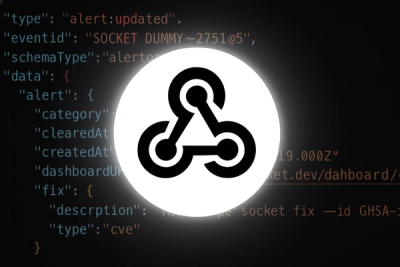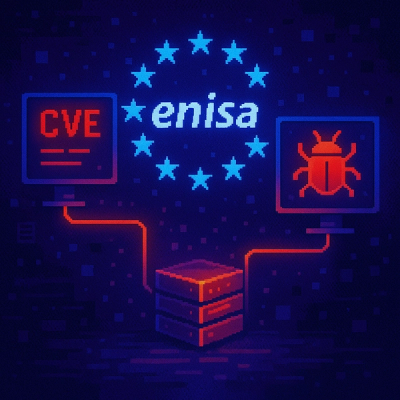
Product
Introducing Webhook Events for Alert Changes
Add real-time Socket webhook events to your workflows to automatically receive software supply chain alert changes in real time.
@sinch/sms
Advanced tools
This package contains the Sinch SMS SDK for Node.js for use with Sinch APIs. To use it, you will need a Sinch account. Please sign up or log in if you already have one.
We recommend to use this SDK as part of the @sinch/sdk-core package in order to make the most out of all the Sinch products.
However, it's still possible to use this SDK standalone is you need to access the SMS API only.
npm install @sinch/sms
yarn add @sinch/sms
The SMS API uses the Sinch unified authentication with OAuth2 for the US and EU regions only. You will need to provide the following credentials:
If you want to use the other regions (BR, AU or CA) or if you prefer to use this type of credential for US or EU, you can use the API Token authentication. You will need to provide the following credentials:
If you are using this SDK as part of the Sinch SDK (@sinch/sdk-core) you can access it as the sms property of the client that you would have instantiated.
import {
Sms,
SmsService,
SinchClient,
ServicePlanIdCredentials,
UnifiedCredentials,
SmsRegion,
} from '@sinch/sdk-core';
const credentialsWithProjectId: UnifiedCredentials = {
projectId: 'PROJECT_ID',
keyId: 'KEY_ID',
keySecret: 'KEY_SECRET',
smsRegion: SmsRegion.UNITED_STATES, // Optional, default is 'us'. Only other possibility is 'eu'
};
// Access the 'sms' service registered on the Sinch Client
const sinchClientCreatedWithProjectId = new SinchClient(credentialsWithProjectId);
const smsServiceWithProjectId: SmsService = sinchClientCreatedWithProjectId.sms;
const credentialsWithServicePlanId: ServicePlanIdCredentials = {
servicePlanId: 'SERVICE_PLAN_ID',
apiToken: 'API_TOKEN',
smsRegion: SmsRegion.UNITED_STATES, // Optional, default is 'us'. Other possibilities are 'eu', 'br', 'au' and 'ca'
};
// Access the 'sms' service registered on the Sinch Client
const sinchClientCreatedWithServicePlanId = new SinchClient(credentialsWithServicePlanId);
const smsServiceWithServicePlanId: SmsService = sinchClientCreatedWithServicePlanId.sms;
// Build the request data
const requestData: Sms.SendSMSRequestData = {
sendSMSRequestBody: {
to: [
'+12223334444',
'+12223335555',
],
from: '+12228889999',
parameters: {
name: {
'+12223334444': 'John',
default: 'there',
},
},
body: 'Hi ${name}',
type: 'mt_text',
},
};
// Use the 'sms' service registered on the Sinch client
// The request will be authenticated with OAuth2 and sent to https://zt.us.sms.api.sinch.com
const availabilityResult_1: Sms.SendSMSResponse
= await smsServiceWithProjectId.batches.send(requestData);
// Use the 'sms' service registered on the Sinch client
// The request will be authenticated with the API Token and sent to https://us.sms.api.sinch.com
const availabilityResult_2: Sms.SendSMSResponse
= await smsServiceWithServicePlanId.batches.send(requestData);
The SDK can be used standalone if you need to use only the SMS APIs. As for a usage with the Sinch Client, you can choose to use the projectId or servicePlanId credentials.
import {
SmsRegion,
ServicePlanIdCredentials,
UnifiedCredentials,
} from '@sinch/sdk-client';
import {
Sms,
SmsService,
} from '@sinch/sms';
const credentialsWithProjectId: UnifiedCredentials = {
projectId: 'PROJECT_ID',
keyId: 'KEY_ID',
keySecret: 'KEY_SECRET',
smsRegion: SmsRegion.UNITED_STATES, // Optional, default is 'us'. Only other possibility is 'eu'
};
// Declare the 'sms' service in a standalone way
const smsServiceWithProjectId = new SmsService(credentialsWithProjectId);
const credentialsWithServicePlanId: ServicePlanIdCredentials = {
servicePlanId: 'SERVICE_PLAN_ID',
apiToken: 'API_TOKEN',
smsRegion: SmsRegion.UNITED_STATES, // Optional, default is 'us'. Other possibilities are 'eu', 'br', 'au' and 'ca'
};
// Declare the 'sms' service in a standalone way
const smsServiceWithServicePlanId = new SmsService(credentialsWithServicePlanId);
// Build the request data
const requestData: Sms.SendSMSRequestData = {
// some request parameters
};
// Use the standalone declaration of the 'sms' service
// The request will be authenticated with OAuth2 and sent to https://zt.us.sms.api.sinch.com
const response_1: Sms.SendSMSResponse = await smsServiceWithProjectId.batches.send(requestData);
// Use the standalone declaration of the 'sms' service
// The request will be authenticated with the API Token and sent to https://us.sms.api.sinch.com
const response_2: Sms.SendSMSResponse = await smsServiceWithServicePlanId.batches.send(requestData);
All the methods that interact with the Sinch APIs use Promises. You can use await in an async method to wait for the response, or you can resolve them yourself with then() / catch().
// Method 1: Wait for the Promise to complete (you need to be in an 'async' method)
let batchResponse: Sms.SendSMSResponse;
try {
batchResponse = await smsService.batches.send(requestData);
console.log(`The SMS has been sent successfully: batch id = ${batchResponse.id}`);
} catch (error: any) {
console.error(`ERROR ${error.statusCode}: the SMS could not be sent`);
}
// Method 2: Resolve the promise
smsService.batches.send(requestData)
.then(response => console.log(`The SMS has been sent successfully: batch id = ${response.id}`))
.catch(error => console.error(`ERROR ${error.statusCode}: the SMS could not be sent`));
Developer Experience team: devexp@sinch.com
FAQs
Sinch SMS API
We found that @sinch/sms demonstrated a healthy version release cadence and project activity because the last version was released less than a year ago. It has 2 open source maintainers collaborating on the project.
Did you know?

Socket for GitHub automatically highlights issues in each pull request and monitors the health of all your open source dependencies. Discover the contents of your packages and block harmful activity before you install or update your dependencies.

Product
Add real-time Socket webhook events to your workflows to automatically receive software supply chain alert changes in real time.

Security News
ENISA has become a CVE Program Root, giving the EU a central authority for coordinating vulnerability reporting, disclosure, and cross-border response.

Product
Socket now scans OpenVSX extensions, giving teams early detection of risky behaviors, hidden capabilities, and supply chain threats in developer tools.